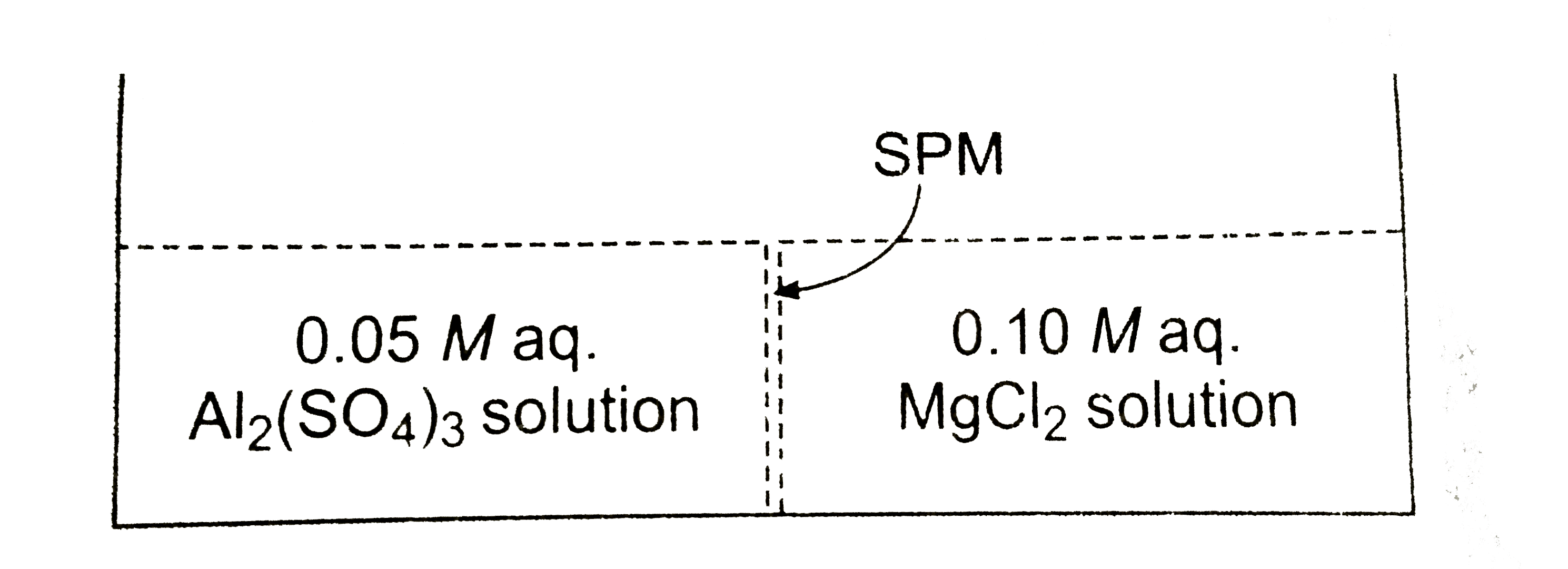Which statements is false? (Assume complete dissociation in each case)
If 2.0 L of a solution of H2SO4 contains 0.1 mole then pH of the solution is 2
The concentration of OH in 0.005 M HNO3 is 2.0×10−12 mol/L
The pH of 0.01 M KOH is 12
In a 0.001 M solution of NaOH the concentration of H+ is 10−3 mol/L
The correct Answer is:D
To determine which statement is false, we will analyze each statement based on the information provided in the video transcript.
1. Statement 1: pH of a 0.1 M H2SO4 solution is 2.
- Given: 0.1 moles of H2SO4 in 2 liters of solution.
- H2SO4 is a strong acid and dissociates completely:
H2SO4→2H++SO42−
- From 0.1 moles of H2SO4, we get:
0.1 moles H2SO4×2=0.2 moles H+
- Molarity of H+:
Molarity=0.2 moles2 L=0.1 M
- pH calculation:
pH=−log(H+)=−log(0.1)=1
- Conclusion: The statement that pH is 2 is false.
2. Statement 2: Concentration of H− in 0.05 M HNO3 is 2×10−12 M.
- HNO3 is also a strong acid and dissociates completely:
HNO3→H++NO3−
- Molarity of H+ is 0.05 M.
- Using the water ion product Kw=10−14:
(OH−)=Kw(H+)=10−140.05=2×10−13 M
- Therefore, the concentration of H− is not 2×10−12 M.
- Conclusion: This statement is false.
3. Statement 3: pH of 0.01 M KOH is 12.
- KOH is a strong base and dissociates completely:
KOH→K++OH−
- Molarity of OH− is 0.01 M.
- Calculate pOH:
pOH=−log(0.01)=2
- Calculate pH:
pH=14−pOH=14−2=12
- Conclusion: This statement is true.
4. Statement 4: In a 0.001 M NaOH solution, the concentration of H+ is 3 moles per liter.
- NaOH is a strong base and dissociates completely:
NaOH→Na++OH−
- Molarity of OH− is 0.001 M.
- Calculate H+ concentration:
(H+)=Kw(OH−)=10−140.001=10−11 M
- Conclusion: This statement is false.
Summary of Findings:
- The false statements are:
- Statement 1: pH of 0.1 M H2SO4 is 2.
- Statement 2: Concentration of H− in 0.05 M HNO3 is 2×10−12 M.
- Statement 4: In 0.001 M NaOH, the concentration of H+ is 3 moles per liter.
- Given: 0.1 moles of H2SO4 in 2 liters of solution.
- H2SO4 is a strong acid and dissociates completely:
H2SO4→2H++SO42−
- From 0.1 moles of H2SO4, we get:
0.1 moles H2SO4×2=0.2 moles H+
- Molarity of H+:
Molarity=0.2 moles2 L=0.1 M
- pH calculation:
pH=−log(H+)=−log(0.1)=1
- Conclusion: The statement that pH is 2 is false.
- HNO3 is also a strong acid and dissociates completely:
HNO3→H++NO3−
- Molarity of H+ is 0.05 M.
- Using the water ion product Kw=10−14:
(OH−)=Kw(H+)=10−140.05=2×10−13 M
- Therefore, the concentration of H− is not 2×10−12 M.
- Conclusion: This statement is false.
- KOH is a strong base and dissociates completely:
KOH→K++OH−
- Molarity of OH− is 0.01 M.
- Calculate pOH:
pOH=−log(0.01)=2
- Calculate pH:
pH=14−pOH=14−2=12
- Conclusion: This statement is true.
- NaOH is a strong base and dissociates completely:
NaOH→Na++OH−
- Molarity of OH− is 0.001 M.
- Calculate H+ concentration:
(H+)=Kw(OH−)=10−140.001=10−11 M
- Conclusion: This statement is false.
- The false statements are:
- Statement 1: pH of 0.1 M H2SO4 is 2.
- Statement 2: Concentration of H− in 0.05 M HNO3 is 2×10−12 M.
- Statement 4: In 0.001 M NaOH, the concentration of H+ is 3 moles per liter.
Similar Questions
Knowledge Check
- Question 1 - Select One
Which statement is false ? (Assume complete dissociation in each case)
AIf 2.0 L of a solution of H2SO4 contains 0.1 mole, then pH of the solution is 1BThe concentration of OH− ions in 0.005 M HNO3 is 2.0×10−12molLCThe pH of 0.01 M KOH is 12DIn a 0.001 M solution of NaOH the concentration of H+ ions is 10−3molL - Question 2 - Select One
Which statement is a false statement ?
Aglycerol is thrihydroxy propaneBcellulose does now show iodine testCthe concentration of glucose in blood in an adult man is 4.5 -5.0 mMDlipds are macromolecule - Question 3 - Select One
For 1 molal solution of each compound minimum freezing point will be assuming compound ionisation in each case :
A[Fe(H2O)6]Cl3B[Fe(H2O)5Cl]Cl2H2OC[Fe(H2O)4Cl2]Cl.2H2OD[Fe(H2O)3Cl3].3H2O
Which statement is false in case of alkali metals ?
View SolutionStudy the following figure and choose the correct options. Assuming complete dissociation of electrolyte:
 View Solution
View SolutionFor 1 molal solution of each compound minimum freezing point will be assuming compound ionisation in each case :
View SolutionWhich of the following statements is false?
View SolutionWhich of the following statements is false
View Solution

